30. April bis 27. Mai 2018
April 30, 5pm: Apéro
Installation im Lichthof 2
Curatorial concept, research, and development: common-interest (Nina Paim & Corinne Gisel)
www.common-interest.ch
Textile design: Nadine Goepfert nadinegoepfert.com
Architectural design: Truwant & Rodet (Dries Rodet & Charlotte Truwant) www.driesrodet.com
www.charlottetruwant.com
(Open Call Studierende)
Guided tours at 20 April, 15:00–16:00 and 18 May, 15:00–16:00.
Please contact: cg@common-interest.ch
This project is developed and produced independently of any department, all participants are involved as independent professionals. Even though Corinne Gisel is also a student in MAE Cultural Publishing.
An investigation into the dress culture of Black Mountain College
“A Black Mountain Closet” is an installation that investigates the cultural history of the Black Mountain College through selected items of dress. Placed in one of the open atriums of the Toni-Areal building, surrounded by plants and open air, the installation takes the form of a physical walk-in closet, designed in collaboration with architects Dries Rodet and Charlotte Truwant. Inside, visitors find a collection of garments that link back to the history of the Black Mountain College: sandals, shift dresses, outdoor working clothes, shirts, jeans, simple jewelry. Each item is especially (re-)created for the installation in collaboration with German textile designer and researcher Nadine Goepfert. Visitors are free to touch the items and try them on, or even make some themselves. “A Black Mountain Closet” thus offers an embodied experience of the dress culture of Black Mountain, thereby embracing the college’s and reform pedagogue John Dewey’s idea of “learning by doing.”
A Black Mountain Closet
An investigation into the dress culture of Black Mountain College
In 1939, Black Mountain College teacher Anni Albers and her then student Alex Reed visited an archaeological excavation site at the temple of Monte Albán in Mexico. There, they saw pre-Columbian jewelry that combined gold, silver and pearls with non-precious materials such as pebbles, rock-crystals, and seashells. Inspired by these ancient items, Albers and Reed started to question the expensive materials conventionally used in mid 20th Century jewelry. Back in North Carolina, going to 5 or 10 cents and hardware stores, they were captivated by the beauty of everyday items. “Enchanted we stood before kitchen-sink stoppers and glass insulators, picture hooks and erasers,”Anni Albers explained.[1] Together, Reed and Albers created a series of necklaces that combined items such as bobby pins, stopper chains, paper clips, or wine corks through simple means of construction. “The art of Monte Albán had given us the freedom to see things detached from their use, as pure materials, worth being turned into precious objects.”[2]
As a liberal arts college, Black Mountain College was, according to Anni Albers, “necessarily concerned with the essential problems of the time” and thus had to be “a laboratory where thought can be tested by action.”[3] In the combination of practical work and intellectual inquiry, Albers saw the potential “to develop foresight by emphasizing the search for fundamental principles that underlie transitory forms, and to show that knowledge must be linked with a will to act.”[4] She was not the only teacher at the college to think that way. In the summer session of 1944, visiting teachers Berta and Bernard Rudofsky, urged their students to engage with dress through both thinking and making. While Bernard lectured about “Contemporary dress: anachronistic, irrational, impractical, harmful,” Berta taught the students how to make their own items of clothing in the most simple way.[5] “Black Mountain’s contribution was that you could live creatively simply by the way you looked at life and the way you lived it,”[6] said Mary Gregory, the woodworking teacher, who helped the students not only make furniture for their own use, but also simple leather items such as sandals. She called the Black Mountain College “an environment where you are called to use all of your faculties in every direction.”[7] In her view, the college became a composite figure: “Creator, theorist, administrator, experimenter, student, teacher, laborer.”[8] In general, the everyday dress culture at Black Mountain College can be said to had been shaped more by functional needs than aesthetic expression. Working on the school’s farm, getting their hands and clothes dirty, men and women wore mostly jeans, simple shirts, and work boots. Facing the hot summer sun, teachers and students often opted for shorts, shirts with casually rolled up sleeves, and sandals. Operating with limited financial means after the Great Depression and during World War II, people had to make more from less, sewing their own clothes and opting for affordable materials.
With “A Black Mountain Closet” we are embracing similar approaches to those of Anni Albers, Alex Reed, Berta and Bernard Rudofsky, Mary Gregory, and others. We are fusing intellectual and practical inquiry to create an environment where visitors are called to use their different faculties. Drawing from historical research we have previously conducted on the dress culture of Black Mountain,[9] we developed a contemporary collection of garments in collaboration with textile designer Nadine Goepfert. This collection consists of simple items such as jeans, shirts, sandals, shift dresses, and accessories. We are using the medium of dress to create awareness about something that is often overlooked: how the way we dress vocalizes our sense of taste, our way of thinking, our personality, but also reflects the social, political, and economic conditions of our life. Whether consciously or unconsciously, our external appearance plays a crucial role in defining our identities as human beings.
The collection is presented in a physical closet, designed by architects Dries Rodet and Charlotte Truwant, and installed in one of the outdoor atriums inside the building of the Zurich University of the Arts. In this space, which is open to the public, visitors are invited to come in and try the garments on themselves. By doing so the visitors engage in a form of shared experience. True to the spirit of Black Mountain, the closet is made of simple materials responding to a functional need: it is a cheap prefabricated greenhouse that can withstand wind and weather. Akin to Albers and Reed’s jewelry, this structure is combined with other materials, which elevate it from a piece of “hardware” into a “precious object.” As such, “A Black Mountain Closet” is neither a historical celebration nor a nostalgic reanimation of Black Mountain, but instead a contemporary creation that seeks to carry forward some of the ideas and principles of the college through an embodied experience. It is a form of reenactment that is a creative dialogue with history, approaching the past not as a fixed entity to be preserved, but as a source of inspiration to make something new. Or, as Italian philosopher Arianna Sforzini puts it: “To re-enact means not to restore but to challenge the past – to not merely repeat it, but to interpret and translate it – in the present and for the present – or for the future.”[10]
Text: common-interest (Corinne Gisel & Nina Paim), 2018
Notes
[1] Anni Albers, On Jewelry, Talk at Black Mountain College, March 25, 1942
[2] Ibid.
[3] Anni Albers, “Black Mountain College,” in Black Mountain College Bulletin, 2:3, December 1943.
[4] Ibid.
[5] Black Mountain College Bulletin, April 1944, Volume II, Number 6, p.6.
[6] “Mary Gregory,” in Black Mountain College Project, retrieved from: http://www.blackmountaincollegeproject.org/Biographies/GregoryMary/GregoryMaryBIO.htm
[7] “Memoir,” in Black Mountain College Project, retrieved from: http://www.blackmountaincollegeproject.org/MEMOIRS/GREGOYRmaryMEMOIR.htm
[8] Ibid.
[9] Corinne Gisel and Nina Paim, “Stripping Down and Dressing Up,” in One and Many Mirrors (working title), Occasional Papers, 2018 (forthcoming).
[10] Arianna Sforzini, introduction to the conference “Over and Over and Over Again”, ICI Berlin, 2017. Retrieved from: https://www.ici-berlin.org/events/over-and-over
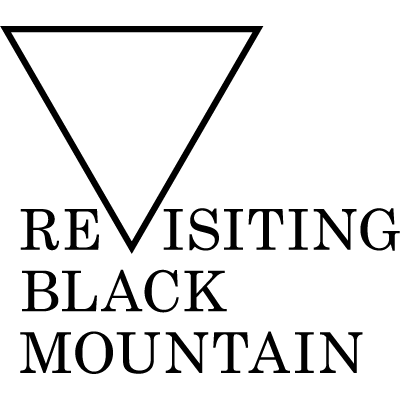
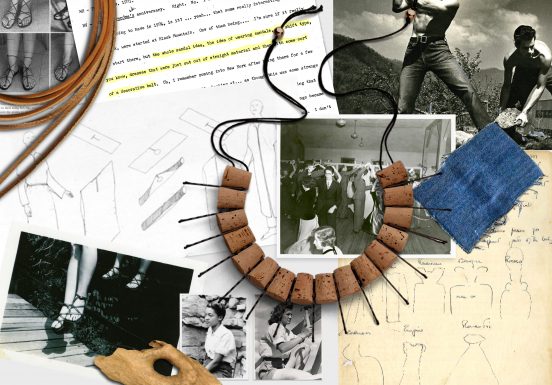
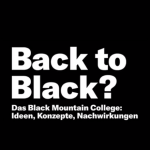
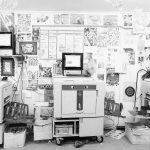
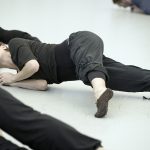

Kommentare von traddatz